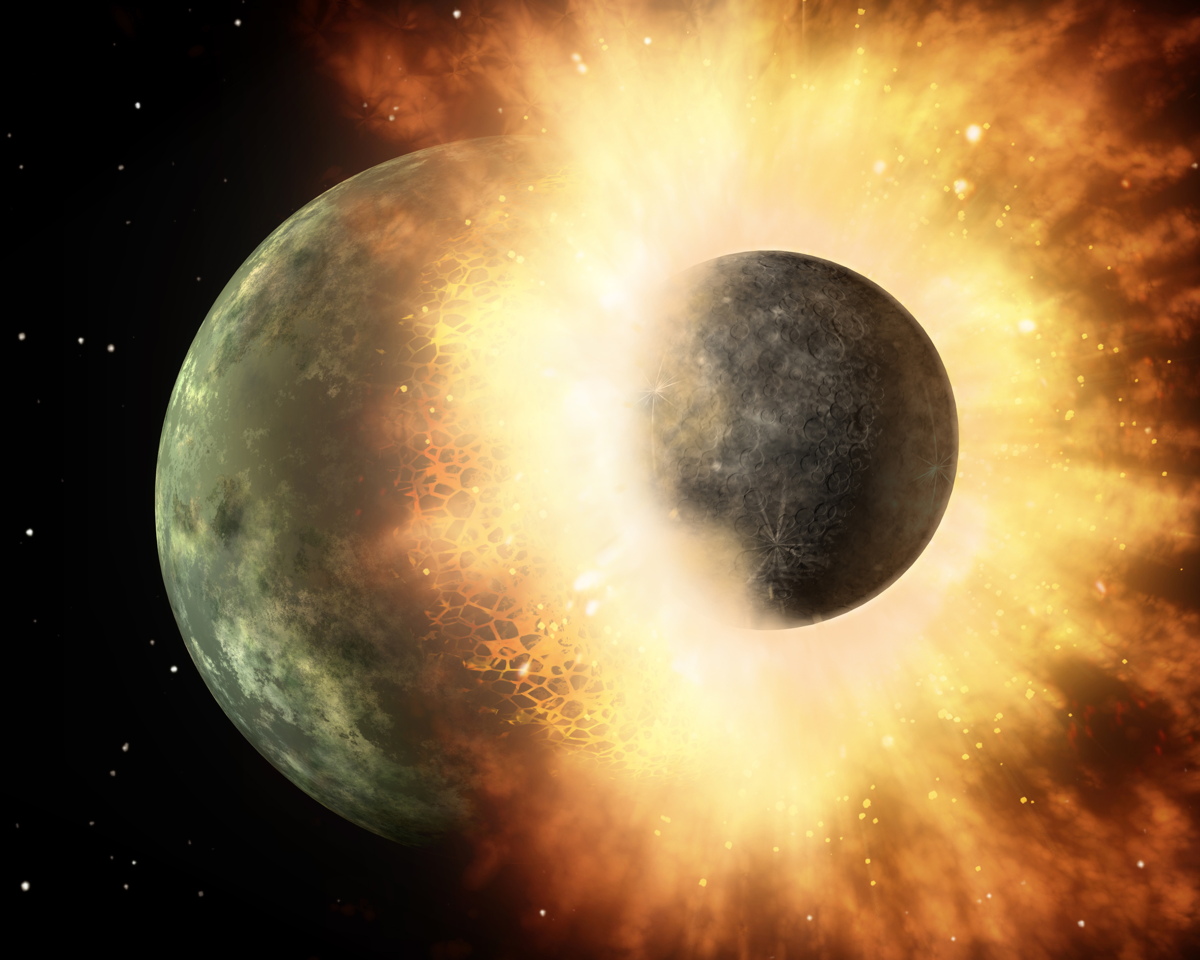Earth Stole Water and More from the Young Moon

Earth may have stolen away water that would otherwise have gone to the moon.
New research suggests that after the impact that formed the Earth and its moon, our planet may have snatched up easily vaporized material known as volatiles, including water and other molecules. As the newly formed moon moved away, it may have spurned the remaining material available, casting it back toward Earth.
"The idea for decades has been that the vaporized volatiles escaped, and that's why the moon lacks them," Robin Canup, of the Southwest Research Institute in Colorado, said on Tuesday (Nov. 10) in a news briefing at the annual meeting of the Division for Planetary Sciences of the American Astronomical Society, in National Harbor, Maryland. Canup was the lead author of a research paper that proposed the material didn't vaporize, but instead hung around. [Water on the Moon: The Search in Photos]
"We're exploring an alternative," she said.
My water! All mine!
Early in the life of the solar system, a young, volatile-rich protoplanet floated near what is Earth's orbit today. A violent collision with another massive object, called Theia, is thought to have shattered that growing world, allowing the formation of the Earth and moon.
Rocks found on the moon bear a striking similarity to those on Earth, but with one difference: They are noticeably lacking in volatile material, such as water, zinc, sodium and potassium. For years, scientists proposed that the heat from the crash with Theia might have vaporized the volatiles, allowing them to completely escape the system. But Canup and her team argue that very little of that material would have been lost, because the speed necessary to leave Earth's gravity would be so high. If that material stuck around, it would have been available for both the Earth and the moon to gather up. [Evolution of the Moon: A Visual Timeline (Gallery)]
In only a handful of years, both the Earth and moon would have re-formed their cores. The remaining material, including the volatiles, would have orbited the larger Earth in a ring system similar to Saturn's. For a brief window of time, the moon would have collected some of the lighter stuff, a process that could have led to a volatile-rich core for the satellite. At the same time, the larger Earth would have gathered more of the volatile mass than its younger sibling did.
Get the Space.com Newsletter
Breaking space news, the latest updates on rocket launches, skywatching events and more!
"But the process doesn't persist indefinitely," so the moon eventually stopped collecting volatiles, Canup said.
Since its formation, the moon has been steadily orbiting farther and farther from Earth; today, it moves away at a rate of 1.5 inches (4 centimeters) each year. As that process occurred in the first few decades of the moon's lifetime, the satellite quickly lost the ability to accrete water and other lighter materials from Earth's ring. Instead, as the dust and gas of the ring interacted with the gravity of the satellite, those materials were flung back toward the planet rather than falling onto the moon.
The moon would take the last half of its mass from the inner region of Earth's disk, which would have been too hot to contain water and other volatile material, Canup said. The result would be a rocky crust on the moon ranging from 60 to 300 miles (100 to 500 kilometers) thick. The layers under that crust could contain more of the missing materials.
The team reached its new results, which were published online in the journal Nature Geoscience, by combining models of heat and chemistry with the previously utilized models of motion, the first time this had been done. The chemistry models were developed especially for this work, and were built to simulate the oxygen-dominated disk that would surround the new Earth, rather than the hydrogen-dominated disk surrounding the sun.
Follow Nola Taylor Redd on Twitter @NolaTRedd or Google+. Follow us @Spacedotcom, Facebook or Google+. Originally published on Space.com.
Join our Space Forums to keep talking space on the latest missions, night sky and more! And if you have a news tip, correction or comment, let us know at: community@space.com.

Nola Taylor Tillman is a contributing writer for Space.com. She loves all things space and astronomy-related, and enjoys the opportunity to learn more. She has a Bachelor’s degree in English and Astrophysics from Agnes Scott college and served as an intern at Sky & Telescope magazine. In her free time, she homeschools her four children. Follow her on Twitter at @NolaTRedd










